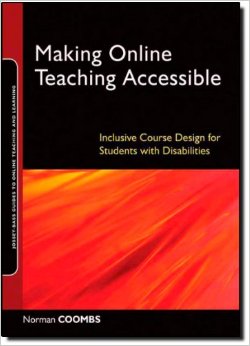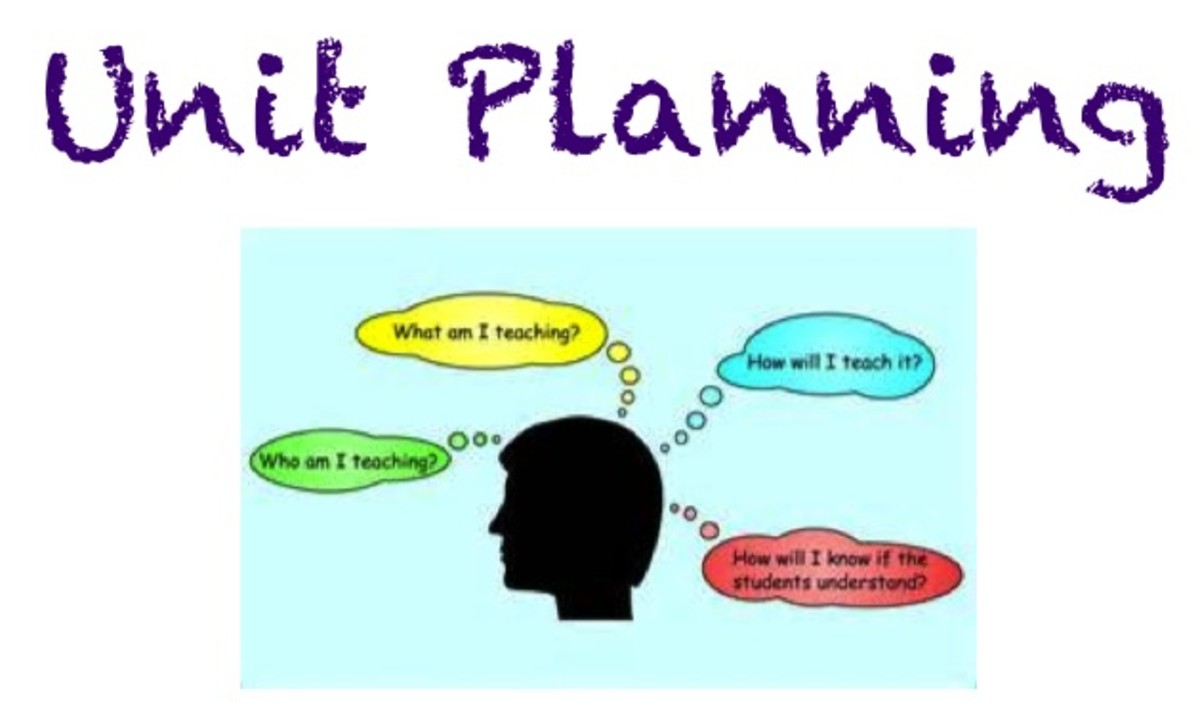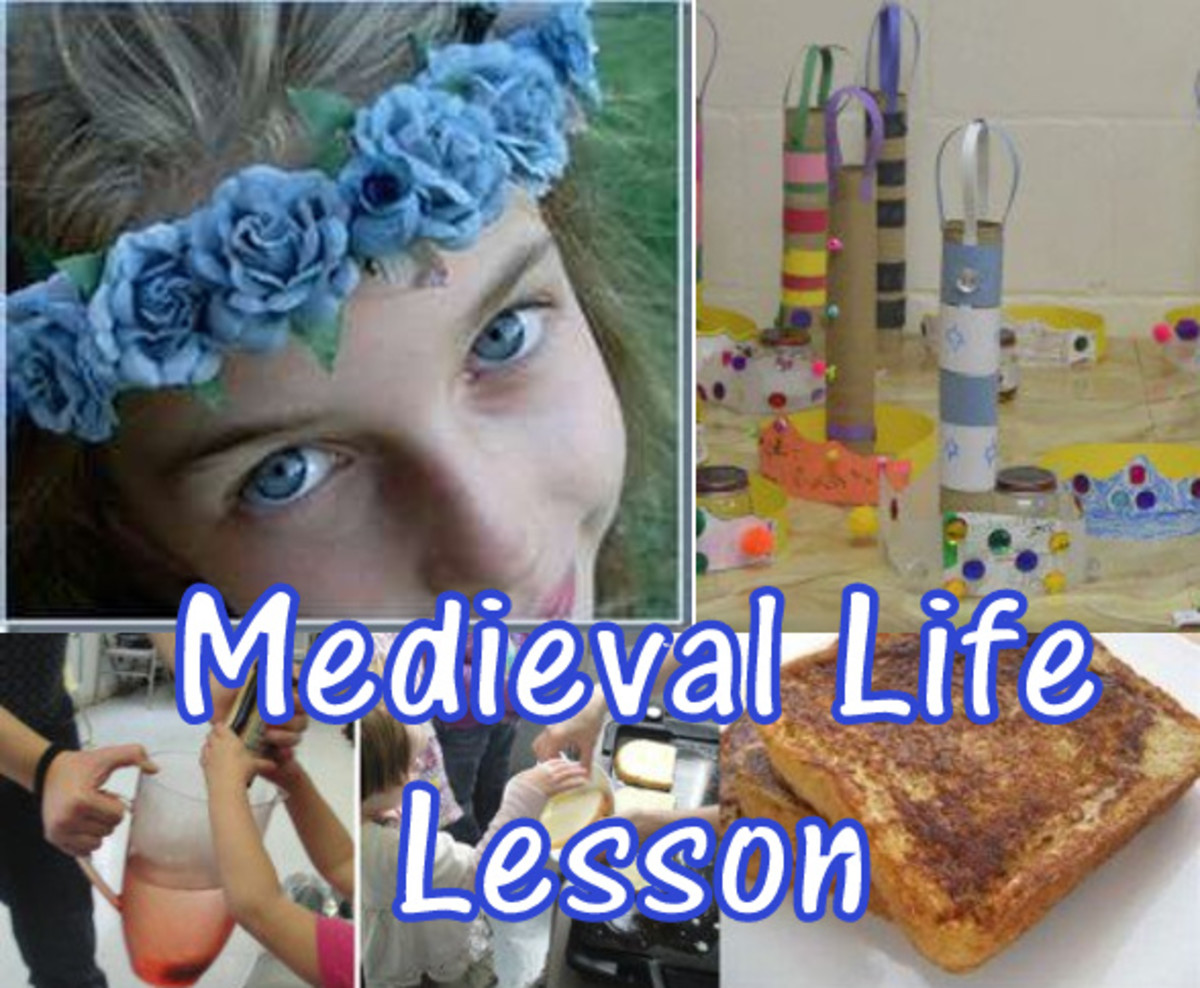Keeping Your Online Course Accessible and Usable
Learning Opportunities For All Students
One of my favorite educational models is the Universal Desugn for Learning, a set of principles for curriculum development that give all individuals equal opportunities to learn.
UDL provides a blueprint for creating instructional goals, methods, materials, and assessments that work for everyone--not a single, one-size-fits-all solution but rather flexible approaches that can be customized and adjusted for individual needs.
Individuals bring a huge variety of skills, needs, and interests to learning. Neuroscience reveals that these differences are as varied and unique as our DNA or fingerprints. With regards to onilne teaching the first facet to consider is accessibility of online content. Federal law requires that academic institutions provide accommodation for students of differing abilities, and this includes online courses. Universal Design for Learning(or UDL) is a set of guidelines often used by educators to ensure their lessons and activities are accessible to all their students.
The Higher Education Opportunity Act of 2008, which is a guiding directive for how online courses should be designed and delivered, defines universal design for learning as "a scientifically valid framework for guiding educational practice that:
(A) provides flexibility in the ways information is presented, in the ways students respond or demonstrate knowledge and skills, and in the ways students are engaged; and
(B) reduces barriers in instruction, provides appropriate accommodations, supports, and challenges, and maintains high achievement expectations for all students, including students with disabilities and students who are limited English proficient" (boldface mine). (Higher Education Opportunity Act, 2008, § 103, Stat. 3086-3090).
The Center for Applied Special Technology (CAST) has prepared a video overview of universal design. Please watch the following adaptation by Torria Bond of California Baptist University; she edited the original video, aimed at a K-12 audience, for a higher education audience:
Universal Design for Learning Remix with Higher Ed Images
A Timely Matter
Creating accessible content, activities, and assessments during the course design and development process is much easier than retrofitting a course later. Plus, federal law requires educators to ensure content is accessible to students with disabilities.
A recent clarification from the Office for Civil Rights interpretation states that a university violates its obligations under the Americans with Disabilities Act when it responds only on an ad-hoc basis to individual requests for accommodation. In recent years, universities including Penn State, Arizona State and Louisiana Tech University have been the subject of federal complaints or lawsuits over charges of inaccessibility.
If you choose to use new/emerging technologies and/or other software/hardware as required components of the course, those must be accessible, too — not only due to the law, but also to meet quality standards. The bottom line: Online course content must be accessible, and accessibility must result in an educational experience that is equitable to that of students without disabilities. Incorporating the Universal Design for Learning Principles enables you to create content that is more accessible for all students and particularly students with disabilities.

Captioning
Your school may or may not have not have the resources available to offer captioning services for instructional video.
Fortunately, tutorials are available you learn to manually add captions or an accurate transcript to your videos using Camtasia Studio or Camtasia Relay for hosting on your Kaltura or Google Apps YouTube account. Do a web search to find them.
Many instructions are also vailable at http://oit.boisestate.edu/ video/closed-captions/.
Applying the Principles of Accessibility and Universal Design for Learning
Essentially, the underlying mantra of universal design is for educators to build into the curriculum enough options and flexibility so that challenges and supports exist to help all students — including those who may be gifted or struggling — to achieve learning objectives. Incorporating universal design into one's course can start with a few simple practices. For example, in my online teaching, I have incorporated the following:
- I use heading styles in the content to distinguish sections from each other and to denote importance
- I add alternative text (ALT text) and long descriptions embedded into graphics, so that screen-reading equipment can describe the graphics to sight-impaired participants
- I provide students with options for accessing outside resources, not only because the content of one might appeal more than another, but also because one resource might be more accessible for someone than another.
In her recent book, Making the Move to K-12 Online Teaching: Research-Based Strategies and Practices (2012), Boise State Educational Technology professor Kerry Rice offers the following example strategies for each UDL Principle (pp.225-226). Although Rice's book is specifically geared toward K-12 online teachers, the strategies she recommends certainly apply and are useful in higher education online classrooms as well.
FREE Resources for Designing and Developing with Universal Design/Accessibility
Accessibility Checklist - A web page for making various file types and technologies accessible, from Pennsylvania State University
Illustrated resources created by Michigan State University
Text-based resources from the Microsoft company
Make Word Documents Accessible
Make PowerPoint Presentations Accessible
Make Excel Spreadsheets Accessible
Use the MS Office Accessibility Checker
Video tutorials also from Microsoft
Make Word Documents Accessible - Total less than 12 minutes
Find and Fix Accessibility Issues in Word (3:15 min.)
Find Accessibility Issues in PowerPoint (1:02 min.)
Find and Fix Accessibility Issues in Excel (2:42 min.)
Checklists and UDL Resources
National Center on Universal Design for Learning
Universal Design for Learning (UDL) Guidelines [PDF]
Real connections: Making distance learning accessible to everyone (13:07 mins.) - TheDOITCenter
The UDL Guidelines (6:21 min.) - UDL Center
UDL at a Glance - (4:36 min.) - UDL CAST
References
Bond, T. (Producer). (2013, March 15). Universal Design for Learning Remix with Higher Ed Images (Version 2) . [Video file] Retrieved from https://www.youtube.com/watch?v=Gpx4Wgqjy_8
CAST. (2012a). National Center on Universal Design for Learning. Retrieved from http://www.udlcenter.org/
CAST. (2012b). Universal design for learning guidelines. [PDF] Retrieved from http://www.udlcenter.org/sites/udlcenter.org/files/updateguidelines2_0.pdf
Ed.Gov. (2010). Higher Education Opportunity Act (2008). Retrieved from http://www2.ed.gov/policy/highered/leg/hea08/index.html
Pennsylvania State University. (2012). Accessibility checklist. Retrieved from http://accessibility.psu.edu/checklist
Rice, K. (2012). Making the move to K-12 online teaching: Research-based strategies and practices. Boston: Pearson.
TheDOITCenter (Producer). (2011, August 18). Real connections: Making distance learning accessible to everyone. [Video file] Retrieved from http://www.youtube.com/watch?v=F3sdR53ho2








